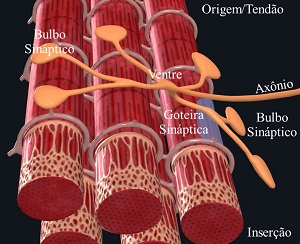Vol. 3 – Number 10 – 2022 Protocolo Page 68-78 Chemical muscle denervation with botulinum neurotoxin type A: Motor Point Technique – the science behind the protocol – Part 1 Marco Antonio Matrone1 Marcelo Alfredo Maqueda2 Jorge Diaz Cortes3 Patricia Oyole4 João Milanez Moreira Júnior5 Marília Capelli Barca6 Taynan Rodrigues Matrone7 Marcia Maria Gomes da Costa8 Thaís Rodrigues Galache9 Alessandra Nogueira Porto10 Pedro Angelo Basei de Paula11 Marcelo Vieira de Castro Santos12 Antônio Aparecido Celória13 ABSTRACT The Botulinum Toxin Type A is a drug with several known therapeutic, functional and aesthetics applications, constantly being found to be useful by medical professionals in several specialties, with several approved regulations in place for its use. Given the multidisciplinary range of applications for this drug, there is a variety of protocols available for its applications with Aesthetic purposes, and that not only includes options for the type, group, and brand of BoNTa, but also protocols that include different injection sites, volume of units per site and/or per treatment, intervals between applications, reconstitution formulas, vehicle for reconstitution; shuffled with a variety of type and size for syringes and needles. The wide range of variables that currently impact the use of this drug for Aesthetic purposes creates doubts and insecurities, when it comes to choosing which cost-effective and safe methods to adopt for the treatments to be offered, allowing gaps on the core principles of educational standards, and causing this therapeutic resource to be many times feared and misused. The Muscular Chemical Denervation Delivered by The Motor Point Technique, or simply Motor Point Technique has been developed with roots on the related basic sciences like Anatomy, Pharmacology, Pharmacodynamics, Neuromuscular Physiology, Physiology of the Muscular Contraction and, based on the interpretation of scientific literature, presents here a Protocol developed by the Technique authors, for the application of BoNTa. The Motor Point Technique brings a novel approach when it comes to anatomical sites for injection; a conservative volume in units of BoNTa compared to what’s known to be the average needed for known treatments, as well as a substantial decrease and the number of injection sites. The many advantages brought to the treatments performed with the use of this Technique are based on the use of a pen-like device, that provides close precision on the location of the Neuromuscular Plate of superficial muscles. This device has been created and developed by Marco Matrone, DDS, OMFS, with the specific purpose for this use. Anatomically, the structure defined by Motor Point on this Technique corresponds to the site where a corresponding motor nerve branch meets muscle fibers, aka Neuromuscular Plate, and the application of BoNTa directly to this area brings consistent precision to the results of BoNTa action, based on the absorption and pharmacodynamics of BoNTa as a neurotoxic drug. To present and clarify the achieved results on cost/benefit, comfort, safety, proven action, better durability, and faster onset of BoNTa action – compared to current conventional techniques – this work has been divided in two parts. Descriptors: Muscular chemical denervation, botulinum toxin, neurotransmission, synapsis, SNAP25, reconstitution, units, motor point. 1 DC – Santos Dental School, M.D. and Ph.D. in Facial Trauma Surgery – Tokyo University – Japan, Specialist in Orofacial Harmonization – CFO. 2 CD – Argentina, M.D. in Integrated Dental Sciences, Dr. in Integrated Dental Sciences 3 MD Me. in Advanced Techniques of Aesthetic Medicine – Pablo de Olavide University – Seville, President of the Chilean Society of Aesthetic Medicine and Surgery (SOCHIMCE), President of the Iberolatinoamerican Federation of Aesthetic Medicine and Surgery (Filamce). 4 CD – Santos Dental School, Professor of Head and Neck Anatomy 5 CD – UNIC – Cuiabá, M. in Integrated Dental Sciences, Dr. in Integrated Dental Sciences 6 CD – UNIMES, Specialist in Restorative Dentistry – UNIMES, Specialist in Harmonization – FAIPE. 7 CD – Universidade Santa Cecília, esp. in HOF – ABCD – Campo Grande. 8 Specialist in Dentistry/Aesthetic Dentistry – Odontoclinica do Exército/RJ, Post-Graduated in Traditional Chinese Medicine and Complementary Therapies in Orofacial Harmonization – ABRAHOF e ABRATH. 9 Specialist in Orthodontics and Orofacial Harmonization – CFO, MSc student in Biophotonics applied to Health Sciences – Uninove. 10 CD – UNIC, Post-Doctorate in Periodontics – University of Taubaté/SP, Residency in Orofacial Harmonization. 11 Medicine Academic – UFPR 12 Bachelor in Mathematics – Santa Cecília University, Graphic Designer and Specilist in Information Technology. 13 CD – UEPG, M.D. in Dentistry – CPO SL Mandic, Specialization in Orofacial Harmonization – CFO. DOI: 10.1038/362318a0
This content is restricted to site members. If you are an existing user, please log in. New users may register below.




